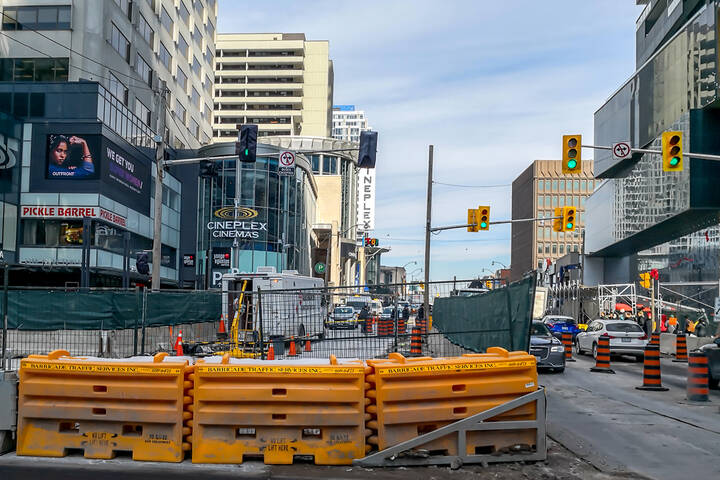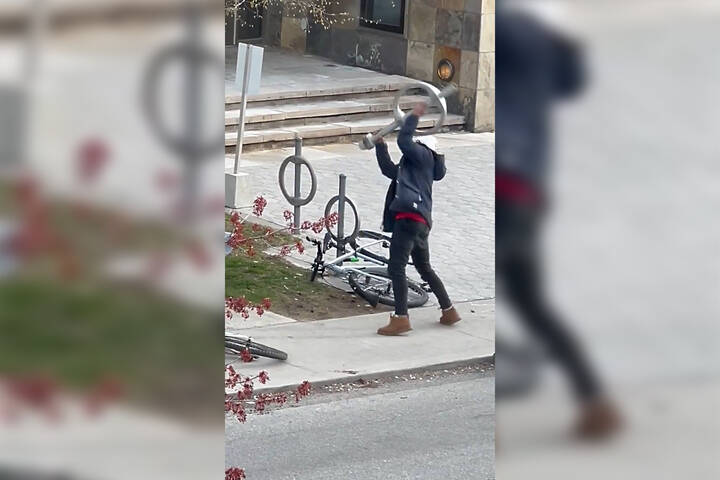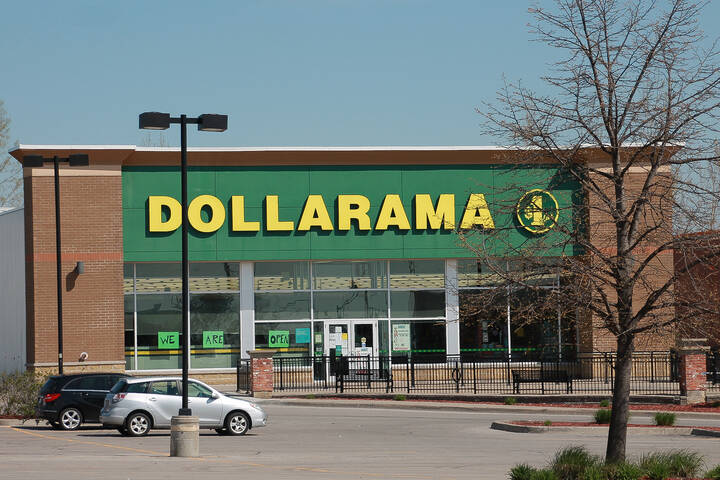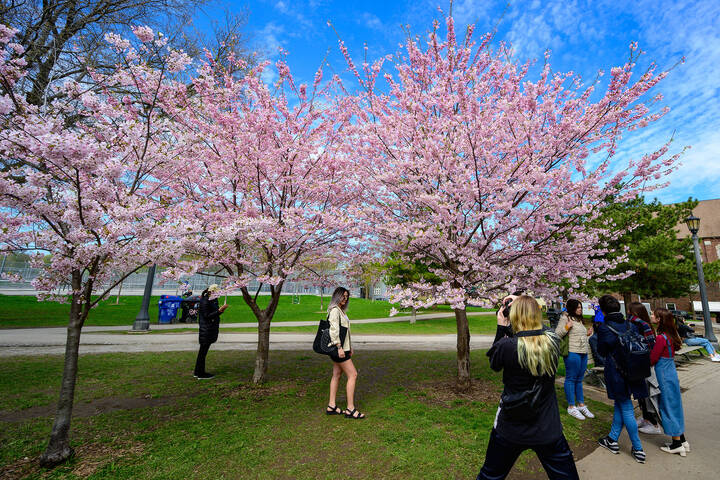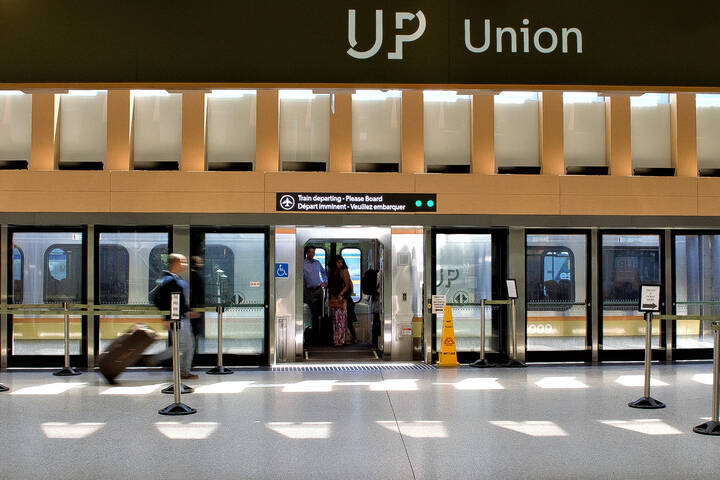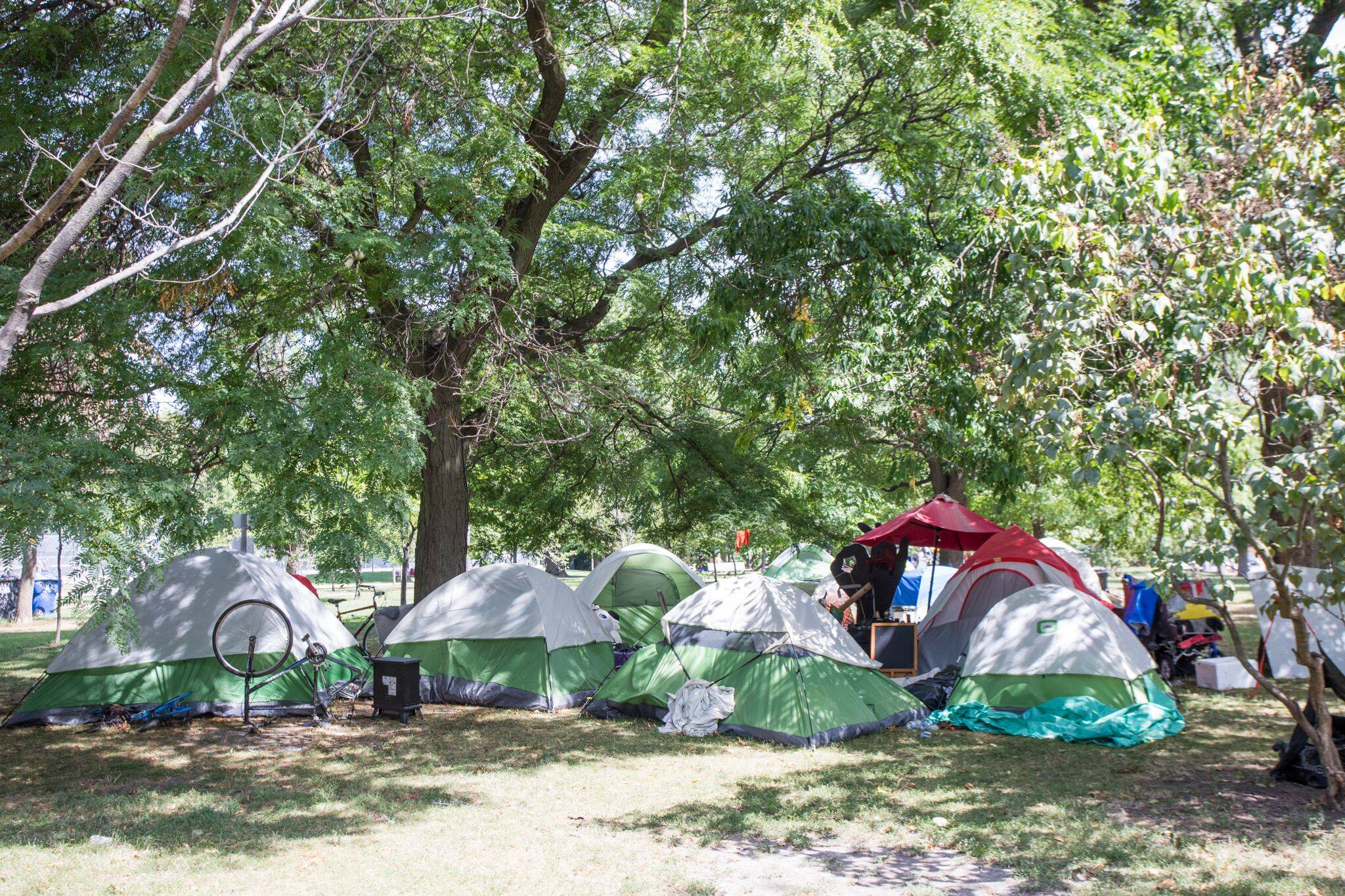
What to know about the tent encampments at Trinity Bellwoods Park
If the COVID-19 pandemic has done anything positive for Toronto's under-housed residents, it's that the city's affordable housing crisis has been rendered unignorable.
People who've long tried to pretend that the situation "isn't that bad" and that it hasn't been getting worse in recent years are now seeing evidence of homelessness everywhere they look: Most recently in the form of sprawling tent encampments at local parks.
From insular Liberty Village to less-polished areas like Moss Park and Scadding Court, downtown Toronto is awash with encampments, the likes of which pretty much used to exist only under large bridges and roadways.
Locals have been wondering aloud all summer why and how so many parks became filled with tents. One major park, in particular, has been getting some negative attention lately for the fast-rising amount of tents within it, and not necessarily from the predominantly young, liberal people who live nearby.
Trinity Bellwoods Park has changed, to say the least, since the COVID-19 pandemic first hit. The popular summer hangout, overrun every weekend for a decade with drunk hipsters on blankets and the like, has been quieter than usual over the past month.
Maybe this has to do with widely-reported police crackdowns on drinking in the park. Maybe the lockdown inspired regulars to find new, less-packed green spaces to frequent. Maybe the appeal of going to Bellwoods was lost when thousands of young people famously flouted social gathering restrictions there in May.
There is some evidence online of people saying that they now avoid Trinity Bellwoods due to "sketchiness" or feeling unsafe among the residents in tents, but — colloquially speaking — a lot of those people are basing their assumptions on what they've seen when driving by.
I'm not going to link to the callous tweets or histrionic YouTube video complaining about what one troubling petition describes as a "growing illegal eyesore that is the tent city encampment" in Trinity Bellwoods Park.
You can find these posts if you go looking, but I wouldn't recommend it.
Instead, you can learn from experts who work on the front lines with people experiencing homelessness — people who actually know the whys, hows, and what-to-dos about tents in the park.
Lesson one, courtesy of the good people at Toronto's Encampment Support Network: Taking photos of encampment residents is incredibly ghoulish.
"Stop taking pictures of people and their tents. Encampments are not zoos," says an ESN spokesperson on behalf of several ESN neighbourhood committee coordinators who spoke to me collectively.
"Ask for consent if you want to document someone's life. If you feel uncomfortable asking for consent, then don't do it."
Here are some more of your encampment questions answered by ESN, The Toronto Drop-In Network (TDIN) and the City of Toronto.
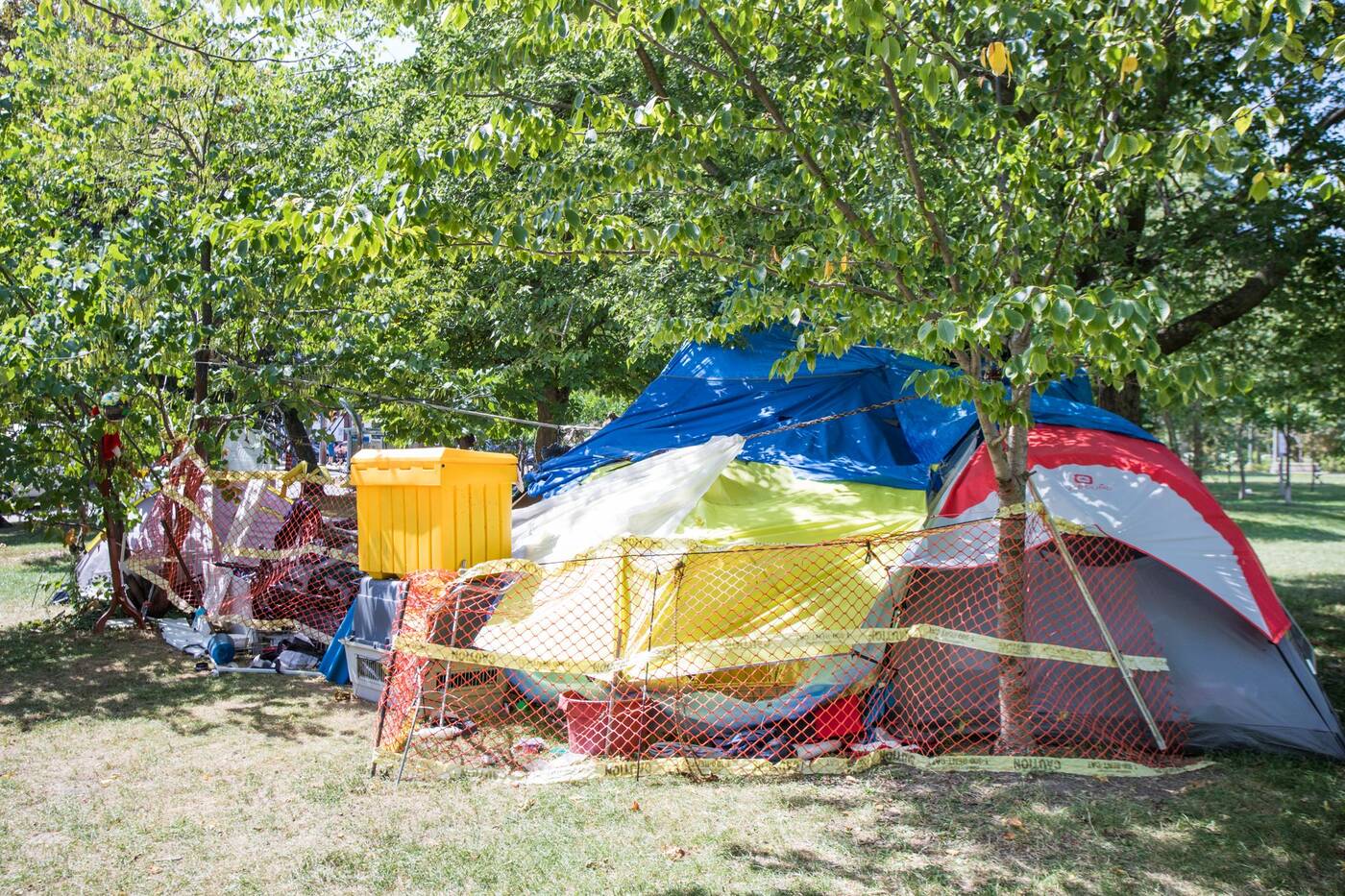
Isn't it illegal to camp in parks? Why is the city not enforcing this?
Yes, under Section 608-13 of the Toronto municipal code, "sleeping in a city park" is prohibited. So is erecting any "permanent tent, structure or shelter" without a permit.
So is drinking rosé at a socially-distanced baby shower picnic, and yet, all of these things are happening regularly right now.
"At the start of the COVID-19 pandemic, encampment clearing had not been happening due to the City's focus on creating safe physical distancing within the Shelter system," said a spokesperson for the city's Shelter Support and Housing Administration (SSHA) Division when asked about enforcing the camping bylaw.
"However, a recent increase in the number and size of encampments has led to increased concerns about the safety and well-being of people living outdoors, as well as the impact on the surrounding community."
The SSHA spokesperson confirmed that 54 different encampments had been cleared by the city since Sept. 9, and that 800 people living within them have been assisted into "safe indoor spaces in shelters and hotel programs."
Before clearing an encampment, outreach workers must offer interim or permanent housing options to residents, whether that be a motel or hotel, shelter or respite space, or permanent housing through programs like the Rapid Access to Housing Initiative. Residents don't generally get to choose.
Between mid-March through Aug. 28, the city says it opened more than 30 temporary respite facilities in addition to the 75 shelter and respite sites it already operates. More than 3,500 people were moved into "temporary community centre programs, hotels and permanent housing" by city-funded programs during that time.
Sadly, there are an estimated 10,000+ people currently experiencing homelessness in Toronto right now, up from around 8,700 in 2018 and growing thanks to the economic impacts of COVID-19.
Even with 3,000 new affordable housing units planned, there's far more need than can be addressed by the city without more funding from other levels of government — and a lot of what is being addressed right now could be done so a lot better, experts say.
(It's of note that Toronto's sleeping and camping in parks bylaws have sparked an Ontario Superior Court of Justice filing in which applications argue that the rules are unconstitutional.)
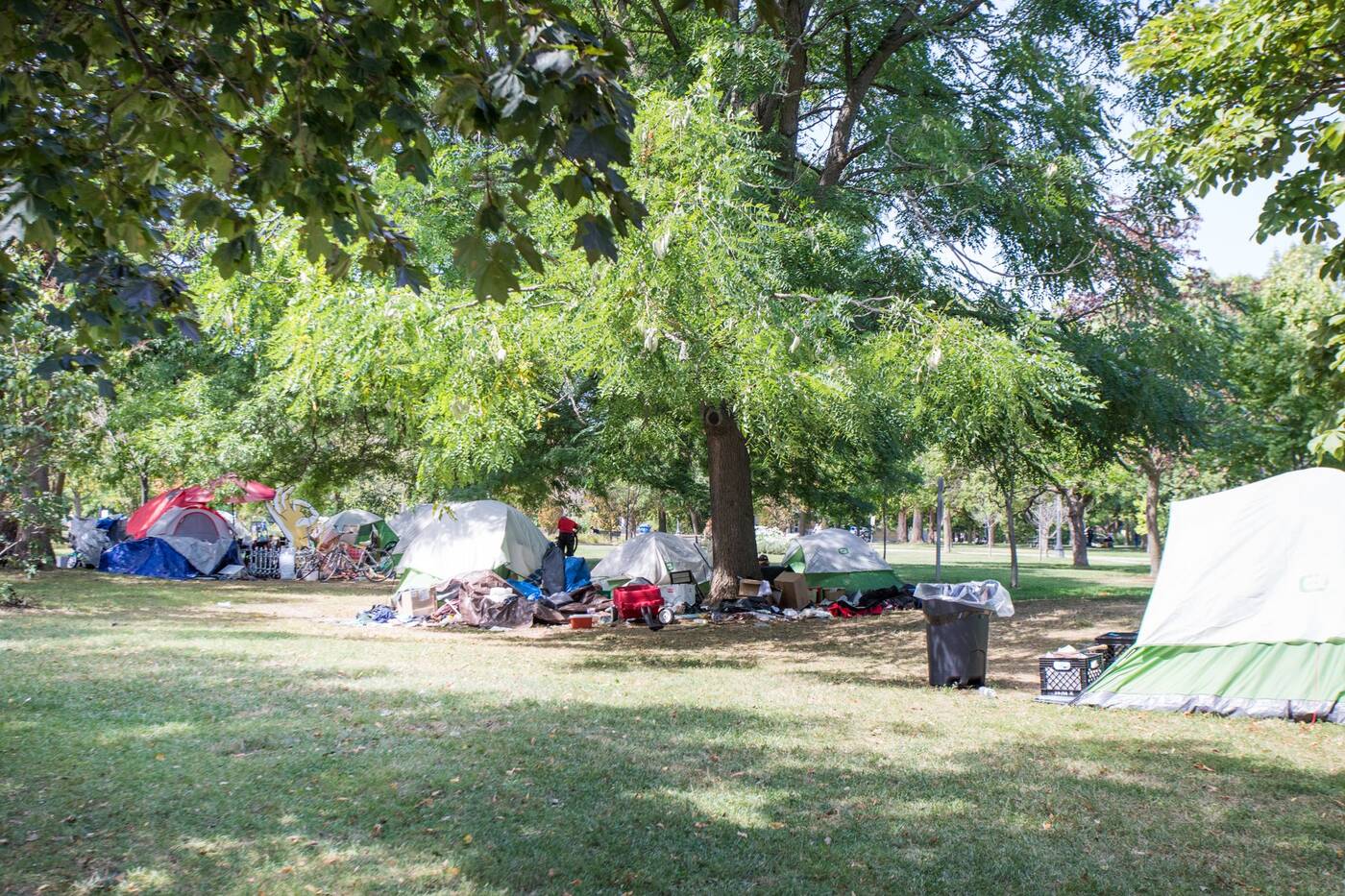
Why are people setting up tents in parks? Can't they go to shelters?
"To start, congregate shelters have not been safe spaces during COVID; in addition to assault and theft, which have always been commonplace in congregate shelters, there have also been 640 cases of COVID across two waves of outbreaks," says TDIN's Diane McNally, who estimates that there are between 1,000 and 2,000 people currently living in encampments across the city.
"There has not been a single reported case of COVID in any encampment, and that's partly because people are both engaging in outdoor settings, and can self-isolate in tents."
McNally explains that encampments also provide people with an opportunity to maintain safety in their own groups, with chosen members of their communities.
With many of the shelter-hotels located far away from neighbourhoods where people experiencing homeless actually live, going to stay in one can be lonely and isolating.
"All of us understand social isolation and loneliness during COVID, but for people experiencing homelessness, this is exacerbated because they’ve already been experiencing stigma and marginalization for years," says McNally.
"So it can feel really cut off to be placed say, in Scarborough, when your friends and chosen family and the services and amenities you use — including overdose prevention sites — aren't available."
ESN Toronto, a group of volunteers who've been bringing supplies to people in encampments for the past 14 weeks, explains that living in a park isn't a choice: It's a necessity for many people living in tents right now and even before the virus hit.
"Encampments are people's emergency option — whether it’s a response to the housing crisis, the covid crisis or the OD crisis — encampments are people's only options," says the organization.
"The shelter system was already full before COVID-19. In order to respect physical distancing, most shelters had to reduce capacity, so people were pushed out of the system... but there have always been encampments, even before COVID-19."
The reasons for that are complicated and plentiful.
"Some people face violence in the shelter system, or feel unsafe because they are reminded of other traumatic institutions, like prisons and residential schools," says the ESN. "They prefer to have autonomy than be subject to paternalistic rules and surveillance."
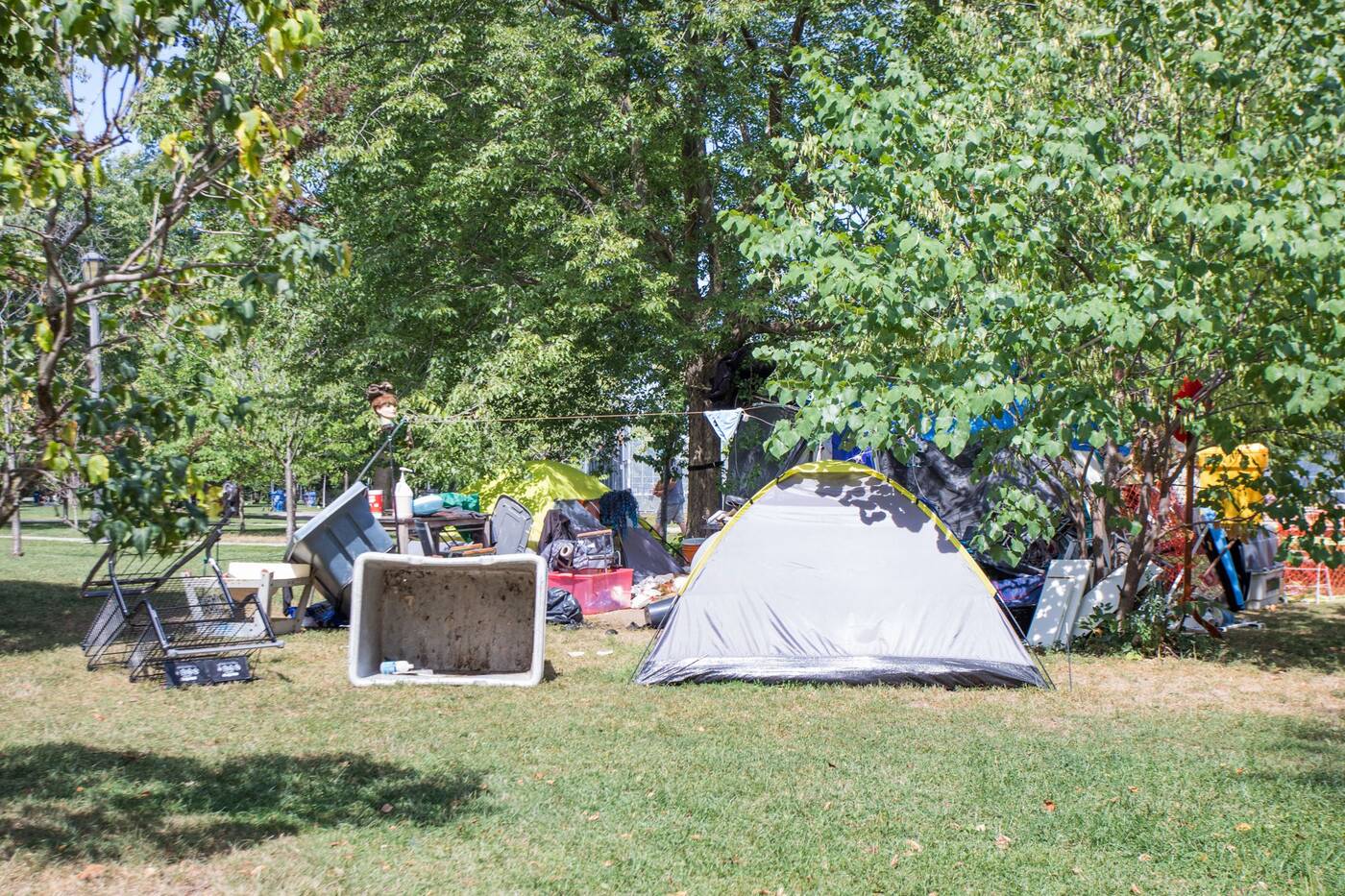
But are encampments safe?
It's all relative, isn't it? I mean, I feel safer walking through Trinity Bellwoods at night than I do walking through King West with a bunch of drunk, juiced-up bros shouting at me from their parents' cars.
For people experiencing homelessness, encampments can be far safer and more comfortable than alternative offers from the city. With the regular shelter system at capacity and a COVID infection rate of over 10 per cent of the shelter population, the alternatives often suck.
Even the temporary shelter-hotels city officials boast about opening in response to COVID have their issues — serious issues in addition to NIMBY jerks giving them dirty looks on the street.
"Lots of people have been overdosing and dying in shelter-hotels, because the 'single room' approach – which, while necessary during a pandemic – means that people are using alone, as none of the shelter-hotels (except for the isolation/recovery site) have on-site supervised consumption services," says McNally.
Says the ESN: "The city hasn't released the number of people dying of overdoses in the shelter hotels, but we hear about it all the time through friends and workers."
The ESN also says that, in addition to being safer than city shelters when it comes to the spread of COVID, encampments are safer for some peoples' mental health.
"Some people who have gone to shelter hotels return to parks and that's for a number of reasons," says the ESN. "Some say that they do so because the shelter hotels have social constraints they can't abide by, like curfews. Some have been kicked out of shelter hotels and are back on the street."
"Some have experienced the death of friends in the shelter hotels, and because there is no option to transfer between shelter hotels, they come back to the street rather than stay in a traumatic situation."
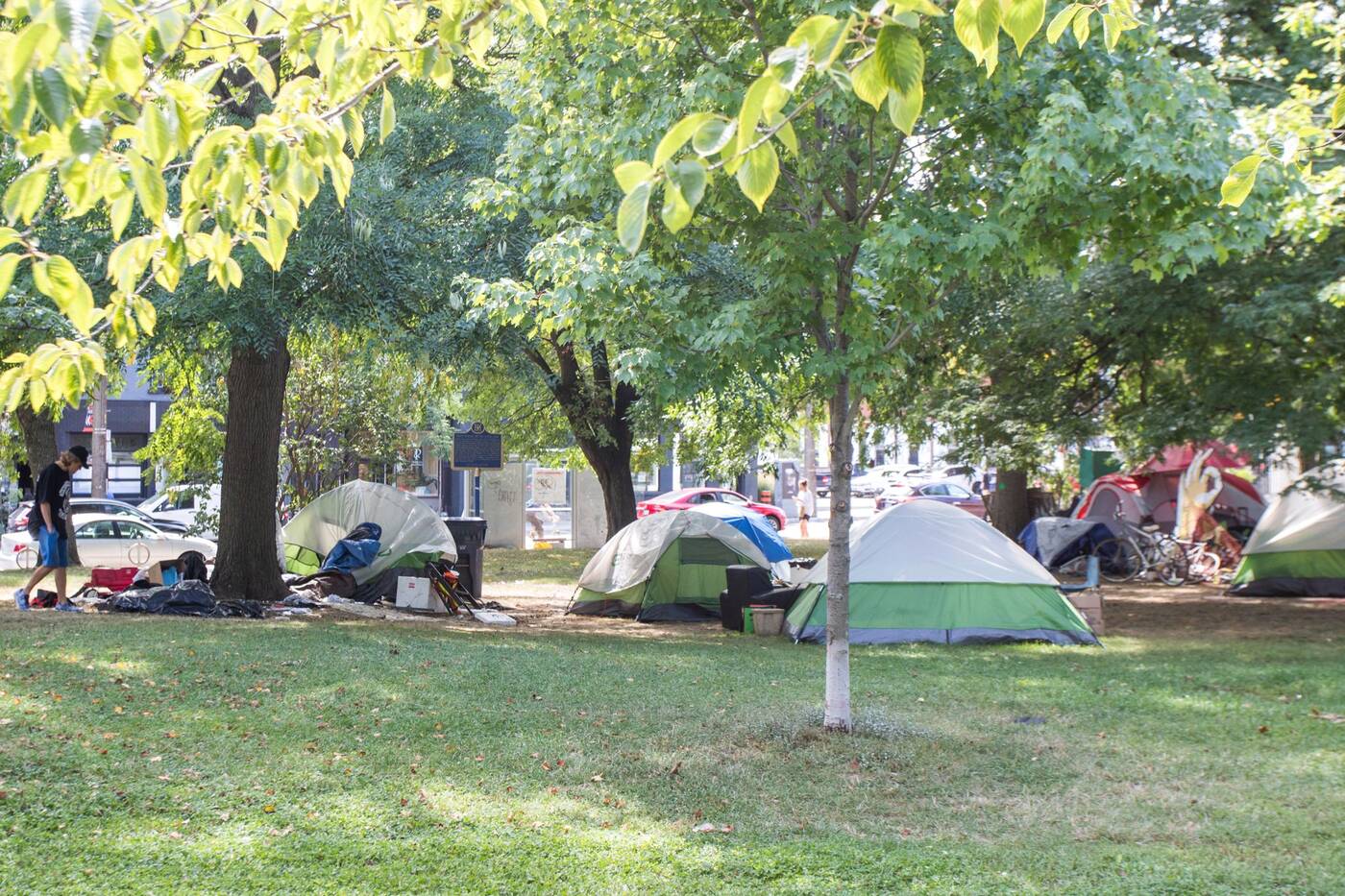
What happens when winter hits?
"There are no set plans or comprehensive strategy for anyone this winter, which is incredibly worrisome, as it is actively putting people at risk of death," says McNally.
"The City is leasing all of the 16 shelter-hotels it established during COVID until at least April, although some sites have a two-year lease (such as the Roehampton). The strategy — which is half a strategy — is, at this point, merely to move people indoors. But the system simply does not have enough spaces to meet the need."
Even if it did have enough space, many people still feel safer living outdoors in the dead of winter than going into a shelter, and I implore anyone who can't understand why to volunteer at a local shelter or respite centre.
"Those of us who don’t regularly interface with shelters don’t understand the risks posed there, but there is regular violence and theft in shelters," says the ESN.
"Some shelters, depending on their approach to harm reduction, are not safe environments for people who use. In a way, this whole point about shelters is moot because shelters are the only option for most people. There are about 3-4 shelter spots available every day."
"People have the right to define what feels safest for them, and to not be subjected to spaces that feel unsafe (and actively are unsafe)," says McNally similarly.
"So there is no plan for people who may continue to live outside, although I am pushing for the City and Streets to Homes workers to provide safer camping equipment (fire-retardant tents and blankets) in line with the recommendations from the Office of the Coroner in the Grant Faulkner Inquest Report."
McNally and other experts say the city should also provide items such as hats, coats, mitts, hand and foot warmers to people living in parks, and expand emergency warming centres as well as public shower facilities.
"I am genuinely worried for the winter, and I feel strongly that the lack of planning for people who will absolutely continue to live outside is going to result in death," she warns.
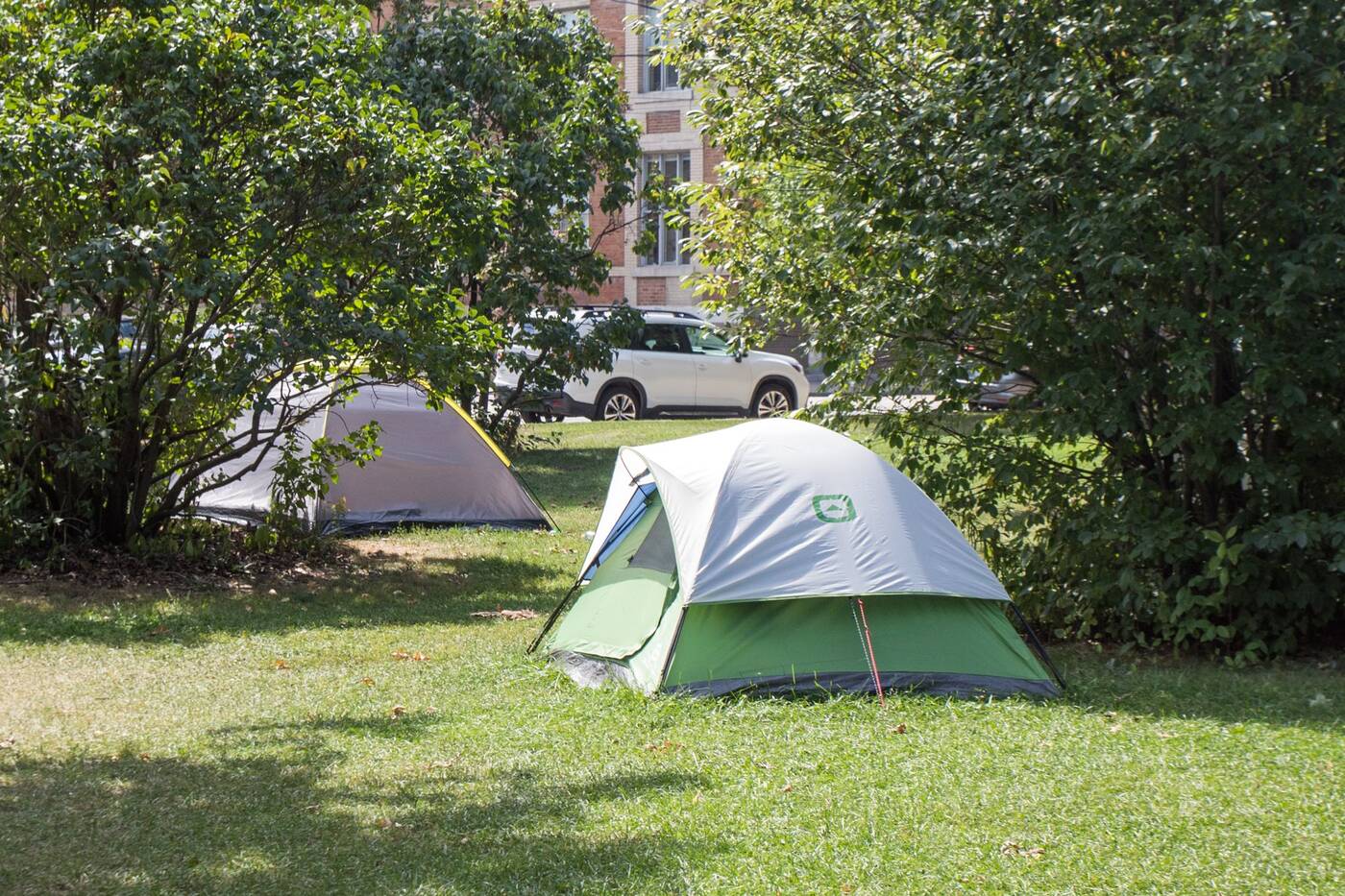
So, how does this all get fixed?
Homelessness and affordable housing are inextricably linked; this much has been established and is glaringly apparent in the City of Toronto, where the rental and real estate markets have become unaffordable for most over the past ten years.
"The city created the housing crisis by being open to development and never prioritizing affordable housing — there has been no substantive new social housing built in Toronto since 1997," says the ESN.
"Even by definition, the 40,000 affordable housing units the city is building over the next 10 years are not actually affordable to people. There are over 102,000 households on the social housing waitlist, and an estimated 10,000 homeless people in the city."
McNally agrees, arguing that the only solution to homelessness is permanent, healthy, appropriate housing.
While our municipal government plays a crucial role in making affordable housing options accessible, McNally says the city isn't and can't be solely responsible for this.
"We need to engage with other levels of government to address the crisis of homelessness, and now, because the long-term effects of the pandemic are going to place more people on the street," she says.
"If anything, I thought the pandemic proved that homelessness or becoming at risk of homelessness has nothing to do with an individual's constitution, and everything to do with a system so precarious that most of us are just one cheque away from missing rent (which many have)."
"The city talks about solving 'chronic homelessness', as though homelessness is a mental health issue, rather the result of a structural deficit of places to live," says the ESN.
"Often the stigma attached to people who are unhoused is that they are somehow unready to have their own apartments, and so institutionalizing them makes sense. The city brags about the shelter-hotel system (they call them hotels) but it is simply a COVID appropriate extension of the shelter system," the organization continues.
"It's actually just soft institutionalization to be warehoused in places where people can't cook for themselves, have guests, or come and go as they please," says the ESN team.
"There is vacancy in Toronto, and it would seem to me that all levels of government should figure out, under the emergency measures that have seen the federal government bailing out the oil industry and the airline industry, how to quickly acquire and open that housing to people."
An aside: If you're loving the ESN as much as I am, you can sign up for their excellent newsletter and get involved right here. You can learn more about McNally's important work with the TDIN here as well. They're modern-day saints.
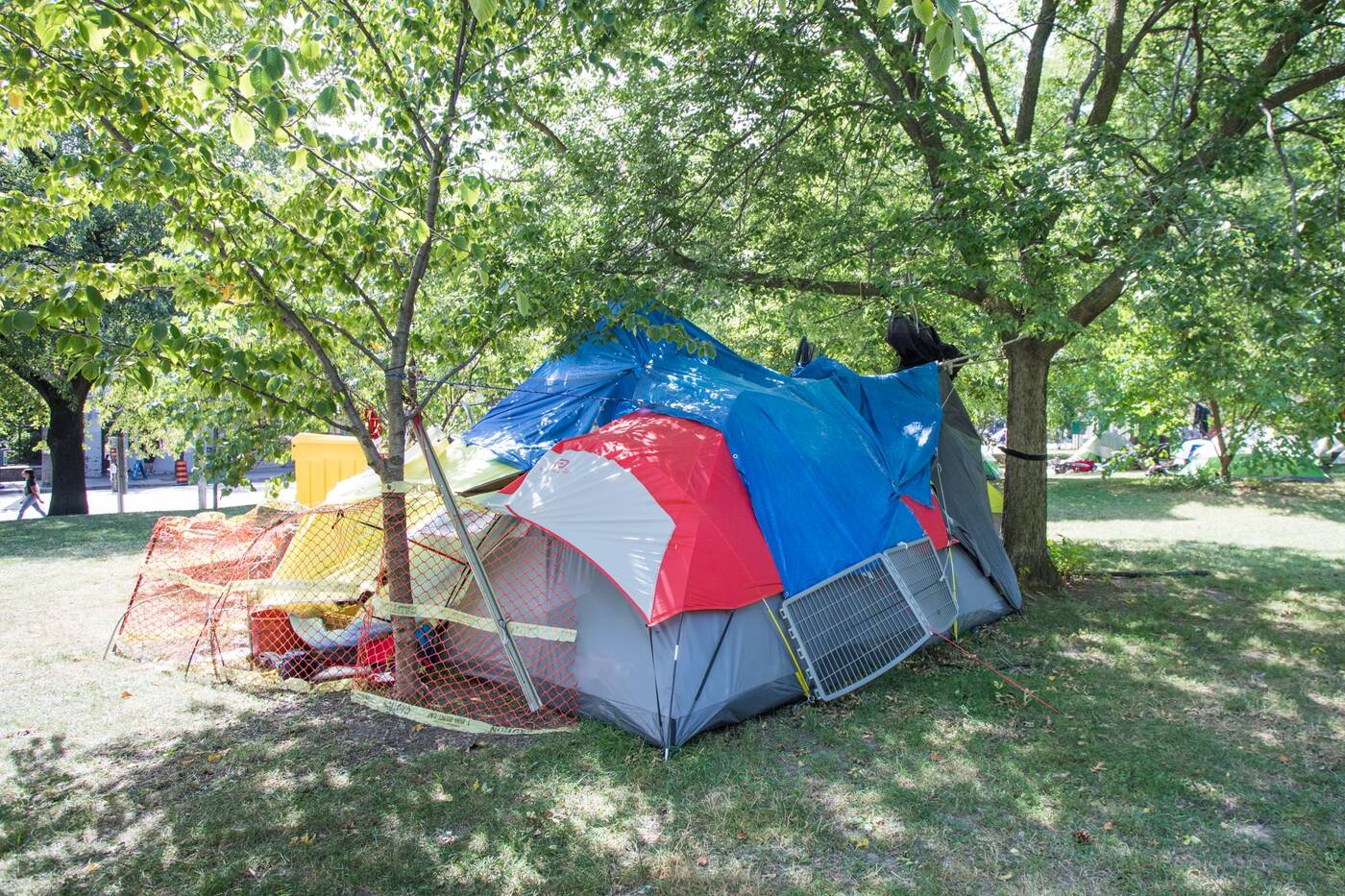
What can I, a fortunate and securely-housed Toronto person, do to help?
First off, don't be a d*ck: The parks belong to everyone, not just wealthy property owners and pearl-clutching NIMBYs who call 311.
"If it makes you uncomfortable to be faced with the fact that some people don't have indoor space to exist in, go be comfortable in your own home," advises the TSN. "Even by settler colonial laws and rules, public parks are for the public, and at this juncture the members of the public who need them most are people who have literally nowhere else to go."
"Ultimately the thing that underscores the NIMBY attitude is that unhoused people aren't humans deserving of the same dignity, respect, or rights as them," the organization continues. "If you start from the place that unhoused people are also people, then you’d be leading with questions rather than complaints."
McNally says similarly that society needs to stop defining people as "deserving" and "undeserving" of basic human needs.
"People who have experienced the level of trauma, stigma, and utter hatred that people experiencing homelessness have encountered should not have to prove themselves to anyone to meet anyone’s moral standards," she says.
"Having a criminal record or being a person who uses drugs doesn’t make you undeserving of housing. People do what they do to survive when they have so few resources, which means engaging in underground economies, and using drugs just to deal with living in an unimaginably terrible situation," she continues.
"These aren't signs of a personal moral failing, they're symptoms of a system of oppression that makes people desperate to survive. People experiencing homelessness aren't 'dangerous', they're survivors."
Secondly, get involved in or donate to local advocacy organizations, or contact your city councillor to ask that people experiencing homelessness get more resources.
"What has become clear to me over the past three months of providing basic aid to people in encampments is the absolute horror show of the city administration," says the ESN.
"These are life and death issues for people in encampments, and the city privileges the opinions of the wealthy over the actual lives of poor people. People in encampments' lives are so devalued that the city feels more duty to homeowners who call 311 just complaining about the mess that encampments leave in their sight lines."
"If the city supported encampments to have access to clean drinking water — which they haven't, and so we've been forced to distribute over 200,000 bottles of water to meet the government's failure — they would be safer," says McNally.
"If we viewed community safety not through the lens of 'people experiencing homelessness are dangerous' and instead through the lens of 'people experiencing homelessness are in danger' they'd be safer."
Fareen Karim
Latest Videos
Latest Videos
Join the conversation Load comments
